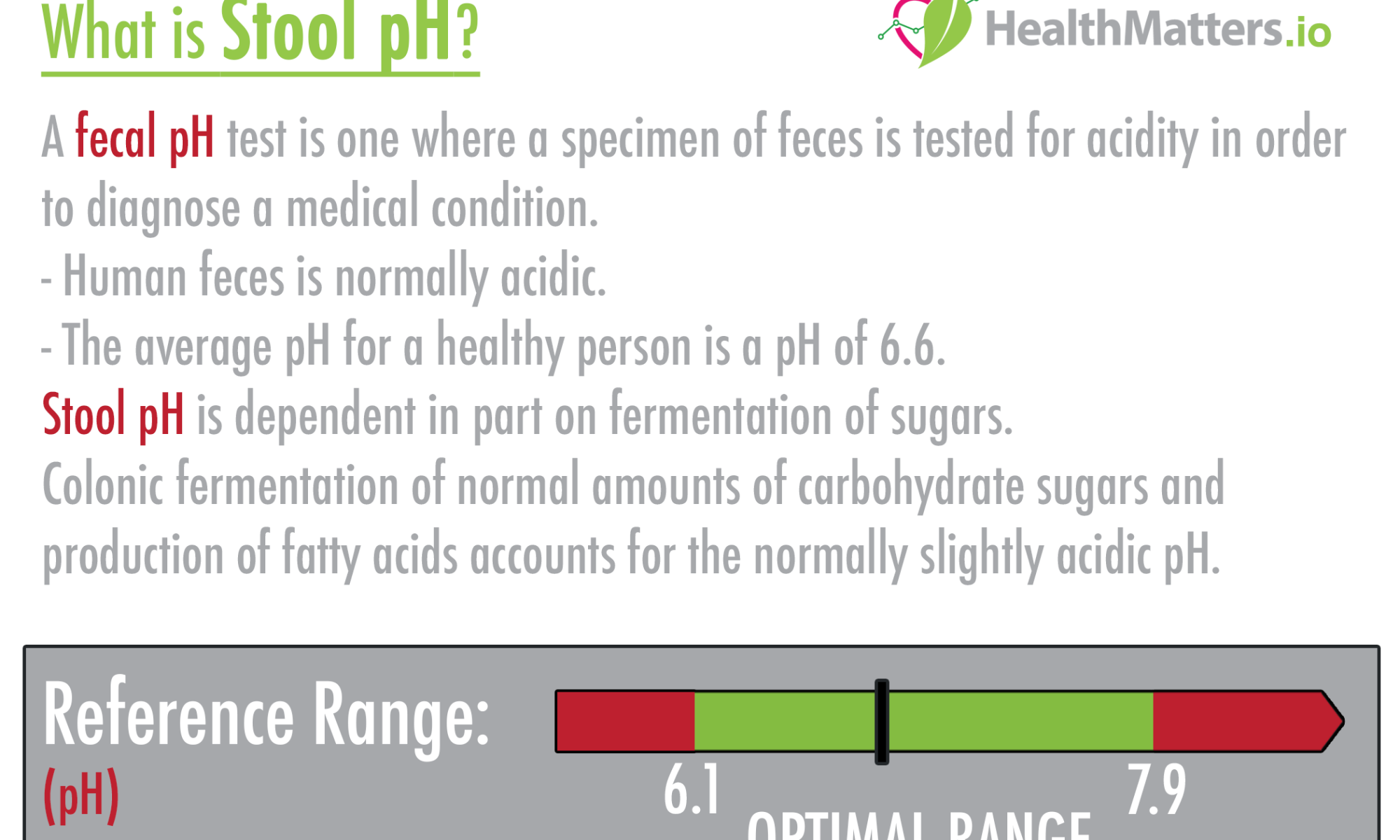A fecal pH test is one where a specimen of feces is tested for acidity in order to diagnose a medical condition.
- Human feces is normally acidic.
- The average pH for a healthy person is a pH of 6.6.
Stool pH is dependent in part on fermentation of sugars. Colonic fermentation of normal amounts of carbohydrate sugars and production of fatty acids accounts for the normally slightly acidic pH.
Lower levels:
A low pH may be caused by poor absorption of carbohydrate or fat.
An acidic stool can indicate a digestive problem such as lactose intolerance or a contagion such as E. coli or rotavirus, or overgrowth of the acid producing bacteria (such as lactic acid bacteria for instance).
Acidic stool has a pH level of less than 5.5. This indicates carbohydrate malabsorption, even in the absence of reducing substances.
A stool pH of <6 (measured by pH paper) is suggestive evidence of sugar malabsorption. Children and some adults notice that their stools have a sickly sweet smell as the result of volatile fatty acids and the presence of undigested lactose. Low stool pH also contributes to the excoriation of perianal skin which frequently accompanies the diarrhea.
Higher levels:
Stool with a high pH may mean inflammation in the intestine (colitis), cancer, or antibiotic use.
Slightly alkaline pH may occur in cases of secretory diarrhea without food intake, colitis, villous adenoma, and possibly with antibiotic usage (with resultant impaired colonic fermentation).
High fecal pH may be a risk factor for colorectal cancer. Intake of oat bran (75−100 g/day over a 14-day period) has been shown capable of reducing fecal pH by 0.4 units. There is evidence, however, that high fecal pH may be secondarily rather than primarily related to cancer risk.


